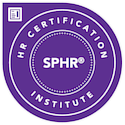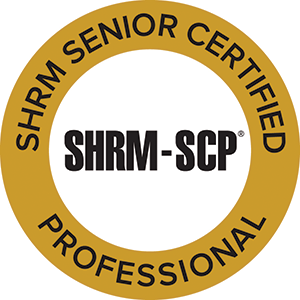One of the things that I think has helped my business grow and thrive for the past 10 years is that I spent significant time at the beginning building a strong foundation.
As I mentioned last time, I went to a SCORE workshop to learn about the requirements (and challenges) of running a small business. I also made sure that I put the proper systems in place to manage my finances, do required reporting, etc. I invested in getting a basic website up and developing quality marketing materials to create Connect to HR awareness. I researched and joined relevant networking groups to build business connections.
Starting and maintaining a strong foundation will help see you through the good times and the challenging ones.
If you have or plan to have employees, there are additional foundational steps you need to take. Here are some key foundational HR items you need to address.
Effective hiring. As you identify the need to hire employees, be sure that you have developed a workforce plan that clearly defines job roles and requirements. Check out my previous blog about effective workforce planning for some tips. Don’t forget, in California there are required notices and forms that employers must provide new hires. Connect to HR offers a new hire tool kit that makes it easy for companies to understand their compliance requirements in the new hire process.
Job descriptions. Detailed and up-to-date job descriptions will help you recruit the right talent and assess their performance. They are also key in ensuring that you are legally compliant. A detailed job description not only protects you when you terminate an employee for non-performance, it also ensures that you comply with the Fair Labor Standards Act (FLSA), the Americans with Disabilities Act (ADA) and other legal requirements.
Goals and objectives. Setting and communicating clear goals and objectives for employees (that are tied to company goals) will help reduce performance issues and keep employees engaged. Goals are a great tool to help monitor performance with clear standards. We suggest you review them with employees monthly, at a minimum, to ensure they are still relevant over time.
Labor law posters. Be sure you post all the required federal and state employment posters and have a system in place for managing your HR records. These posters are required for all businesses with two or more employees.
Employee Handbook. It’s important to have an Employee Handbook that includes basic employment policies as well as policies specific to your company. You can avoid employee and legal issues if you clearly communicate expectations about work hours, conduct, etc.
Health and safety. Company management is responsible for creating and maintaining a safe and healthy work environment. In California, all employers should have an Injury Illness and Prevention Program (IIPP).
Terminations. Just as it’s important to have an effective hiring process, it’s important that you have an effective (and legally compliant) process for terminating employees. Creating and following a Termination Checklist will help ensure that you cover all the bases. Terminating an employee is never easy, but putting some structure around it can make it less stressful for both you and the employee.
Please reach out to me at michelle@connecttohr.com if you need guidance on any of these items.


 Very few people jump at the chance to have what they know will be a difficult conversation. Whether it’s delivering bad news (“we have to lay you off”), providing negative feedback (“your report had multiple errors and needs to be redone”) or breaking off a relationship (“it’s not you, it’s me”) most of us will go out of our way to avoid initiating that conversation. In fact, according to a survey by
Very few people jump at the chance to have what they know will be a difficult conversation. Whether it’s delivering bad news (“we have to lay you off”), providing negative feedback (“your report had multiple errors and needs to be redone”) or breaking off a relationship (“it’s not you, it’s me”) most of us will go out of our way to avoid initiating that conversation. In fact, according to a survey by 
 You only have to glance at the news to get the feeling that workplace bullying and harassment are on the rise. Bill O’Reilly was called out recently for his behavior toward women at Fox News, as Roger Ailes had been accused before him. As of a few days ago, more than 50 companies had pulled their advertising dollars from The O’Reilly Factor.
You only have to glance at the news to get the feeling that workplace bullying and harassment are on the rise. Bill O’Reilly was called out recently for his behavior toward women at Fox News, as Roger Ailes had been accused before him. As of a few days ago, more than 50 companies had pulled their advertising dollars from The O’Reilly Factor. As I’ve often said, performance management is an ongoing process not just an annual event. As such, when there’s a performance issue it’s important to deal with it in a timely manner. The goal should be – if possible – to turn the situation around and get the employee back on track versus terminating them. This requires a plan. Here are some tips for developing an effective Performance Improvement Plan (PIP).
As I’ve often said, performance management is an ongoing process not just an annual event. As such, when there’s a performance issue it’s important to deal with it in a timely manner. The goal should be – if possible – to turn the situation around and get the employee back on track versus terminating them. This requires a plan. Here are some tips for developing an effective Performance Improvement Plan (PIP).


